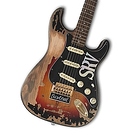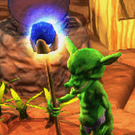I want to write a 2.5d game (platformer which uses 3d models instead of 2d sprites). This is my first 3d game.
At the moment I am deciding between either using a full fledged engine like godot (or maybe but probably not unity/unreal) or using something that is more of a framework for the 3d graphics like Irrlicht or Urho3D.
I like doing my stuff in C/C++ and also having freedom around how I write my game logic, that is what speaks for Irrlicht or Urho.
But what bothers me is that if I look at trailers for Unity/Unreal games on youtube, they all have this kind of “modern” (this is subjective of course) light/cute/colourful graphics as seen here:
https://www.youtube.com/watch?v=_xXD_9vS56E
or here:
https://www.youtube.com/watch?v=43wQ-3sV6nE
When I look at youtube videos of Urho3D demos or check out the default installed examples which come with urho they all look very greyish/a bit edgy to me (same goes for Irrlicht).
They very much remind me of 200x games like Morrowind.
Now I don’t know which of the following is the case:
- The engines just have different shaders and “default” graphics
- The engines are just from different times and use different technologies which makes the outcome look different
And in both cases, how hard is it to get this kind of more colourful graphics in Urho3d? Do I have to learn about shaders for that? (Or about what?) And how much do I have to learn?
Thanks very much in advance









